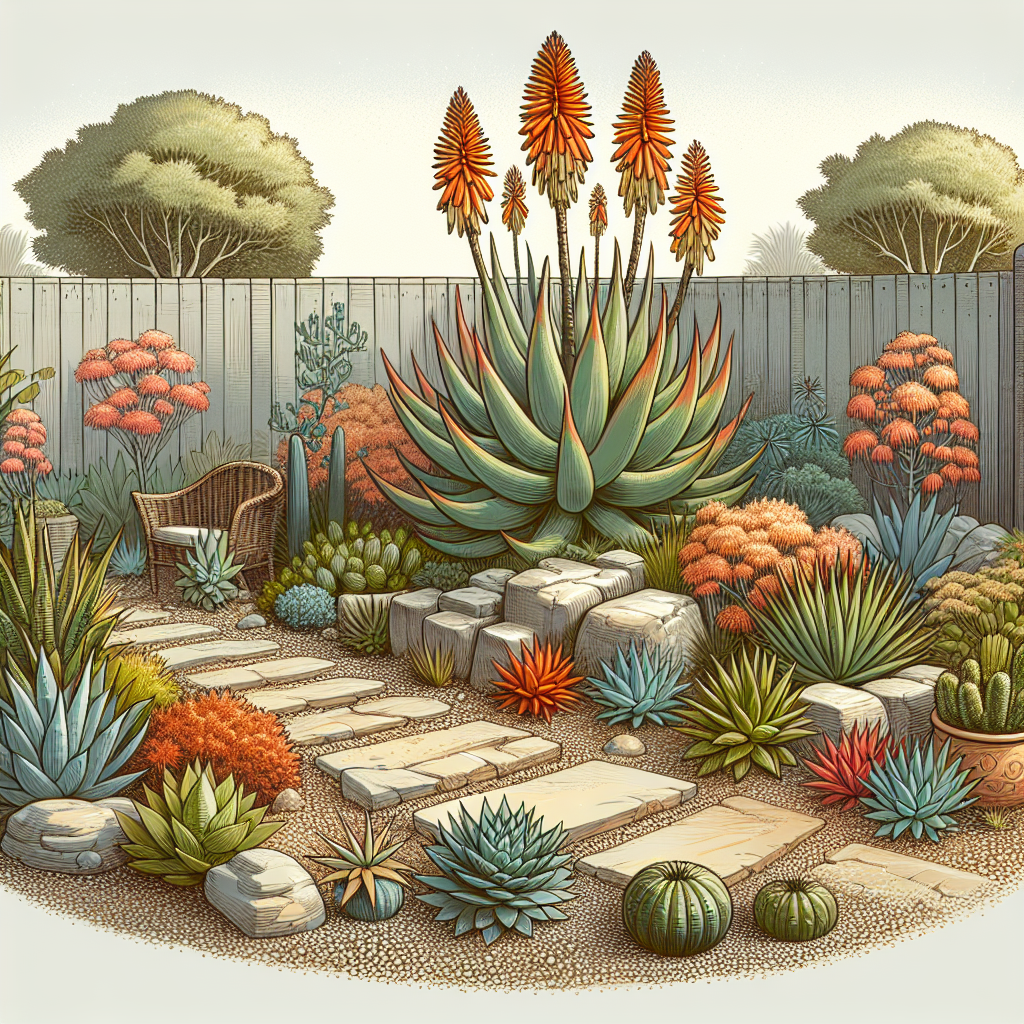Designing a Drought-Tolerant Landscape: Create a Beautiful and Sustainable Outdoor Space
Welcome to this comprehensive guide on designing a drought-tolerant landscape. In this article, we will explore step-by-step instructions on how to create a stunning outdoor space that not only conserves water but also adds beauty and value to your property. By following these instructions, you will be able to transform your garden into a sustainable oasis that thrives even in times of water scarcity.
Step 1: Assess Your Landscape
The first step in designing a drought-tolerant landscape is to assess your current outdoor space. Take a walk around your garden and observe the existing plants, soil conditions, and water usage. This will help you understand the specific needs and challenges of your landscape.
Pay attention to areas that receive more or less sunlight, as this will influence your plant selection. Identify any areas with poor drainage or erosion issues, as these will need to be addressed during the design process.
Step 2: Set Your Goals
Before diving into the design process, it’s important to set clear goals for your drought-tolerant landscape. Ask yourself what you want to achieve with this project. Are you looking to reduce water consumption, create a low-maintenance garden, or attract pollinators?
By defining your goals, you can tailor your design choices to meet your specific needs. This will ensure that your landscape not only looks beautiful but also serves a purpose that aligns with your values and preferences.
Step 3: Choose Drought-Tolerant Plants
One of the key elements of a drought-tolerant landscape is the selection of appropriate plants. Look for plants that are native to your region, as they are naturally adapted to the local climate and require less water.
Some popular choices for drought-tolerant plants include succulents, cacti, lavender, yarrow, and ornamental grasses. These plants have evolved to survive in arid conditions and can add texture, color, and interest to your landscape.
When choosing plants, consider their water needs, growth habits, and maintenance requirements. Group plants with similar water requirements together to create efficient irrigation zones.
Step 4: Improve Soil Health
Healthy soil is essential for the success of a drought-tolerant landscape. Before planting, assess the quality of your soil and make any necessary improvements.
Amend your soil with organic matter such as compost or well-rotted manure to improve its water-holding capacity and nutrient content. This will help your plants establish strong root systems and withstand periods of drought.
Additionally, consider adding a layer of mulch around your plants to conserve moisture, suppress weeds, and regulate soil temperature. Organic mulches like wood chips or straw are excellent choices for a drought-tolerant landscape.
Step 5: Implement Efficient Irrigation
Efficient irrigation is crucial for a drought-tolerant landscape. Traditional sprinkler systems can be wasteful and inefficient, leading to unnecessary water loss.
Consider installing a drip irrigation system, which delivers water directly to the roots of your plants. This method minimizes evaporation and ensures that water is used efficiently.
Group plants with similar water needs together and zone your irrigation system accordingly. This will allow you to tailor the watering schedule to each zone, providing the right amount of water to each plant.
Step 6: Incorporate Hardscaping Elements
In addition to plants, hardscaping elements can add structure and visual interest to your drought-tolerant landscape. Consider incorporating features such as pathways, patios, or retaining walls.
Choose materials that are locally sourced and environmentally friendly. Options like gravel, flagstone, or permeable pavers allow water to infiltrate the soil, reducing runoff and promoting groundwater recharge.
Step 7: Maintain Your Landscape
Once your drought-tolerant landscape is in place, proper maintenance is essential to ensure its long-term success. Follow these tips to keep your outdoor space thriving:
- Regularly monitor soil moisture levels and adjust your watering schedule accordingly.
- Remove weeds promptly to prevent competition for water and nutrients.
- Prune plants as needed to maintain their shape and promote healthy growth.
- Monitor for pests and diseases and take appropriate action to prevent damage.
- Refresh mulch annually to maintain its effectiveness.
Materials and Time Required
To complete this project, you will need the following materials:
- Drought-tolerant plants
- Compost or well-rotted manure
- Organic mulch
- Drip irrigation system
- Hardscaping materials (e.g., gravel, flagstone, permeable pavers)
- Gardening tools (e.g., shovel, rake, pruning shears)
The time required to design and implement a drought-tolerant landscape will vary depending on the size and complexity of your outdoor space. On average, it may take several weeks to complete the project, including plant selection, soil preparation, and installation of irrigation and hardscaping elements.
Visualize Your Drought-Tolerant Landscape
Imagine stepping into your newly designed drought-tolerant landscape. Picture vibrant succulents, swaying ornamental grasses, and a meandering pathway leading to a cozy seating area. The colors, textures, and scents of your garden create a tranquil and inviting atmosphere.
The efficient irrigation system ensures that every drop of water is used wisely, while the mulch keeps the soil moist and weed-free. The hardscaping elements add structure and functionality to your outdoor space, creating a seamless blend of nature and design.
With your drought-tolerant landscape in full bloom, you can enjoy the beauty of your garden while knowing that you are making a positive impact on the environment.
Summary
Designing a drought-tolerant landscape is a rewarding project that allows you to create a beautiful and sustainable outdoor space. By following the step-by-step instructions outlined in this article, you can transform your garden into a thriving oasis that conserves water and supports local ecosystems.
Remember to assess your landscape, set clear goals, choose drought-tolerant plants, improve soil health, implement efficient irrigation, incorporate hardscaping elements, and maintain your landscape. With careful planning and attention to detail, you can create a drought-tolerant landscape that not only enhances the beauty of your property but also contributes to a more sustainable future.






